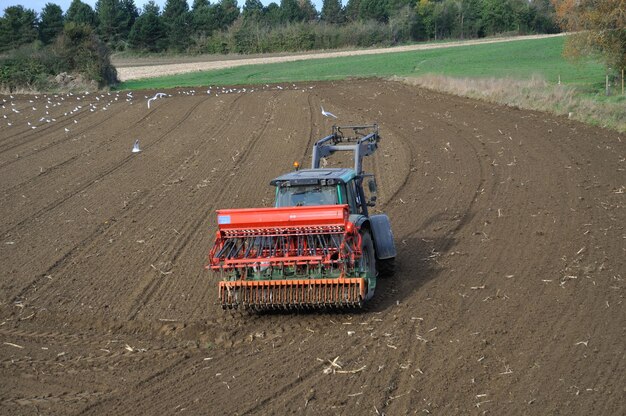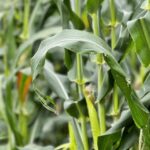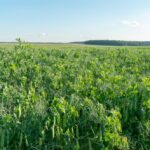Mulching is a powerful practice in modern agriculture, offering multiple benefits such as improved soil health, moisture retention, weed suppression, and temperature regulation. By using the right mulching equipment effectively, farmers can maximize these benefits while saving time and effort. Here are the best practices for using mulching equipment to enhance crop health and boost farm productivity.
1. Understand the Benefits of Mulching
Before diving into equipment usage, it’s essential to know how mulching benefits crops:
- Moisture Retention: Mulch reduces evaporation, keeping the soil moist for longer periods.
- Weed Suppression: A mulch layer blocks sunlight, preventing weed growth.
- Temperature Regulation: Mulch insulates the soil, protecting roots from extreme temperatures.
- Soil Health Improvement: Organic mulches decompose over time, adding nutrients and improving soil structure.
Using mulching equipment ensures these benefits are applied consistently and efficiently.
2. Choose the Right Mulching Equipment
The choice of equipment depends on the type of mulch you are applying and the scale of your operation. Common types of mulching equipment include:
- Mulch Spreaders: Ideal for spreading organic materials like straw, hay, or compost evenly over fields.
- Plastic Mulch Layers: Used to lay rolls of plastic mulch in rows for crops like tomatoes and melons.
- Chippers and Shredders: Useful for creating mulch from tree branches and other organic debris.
- Straw Blowers: Efficient for applying straw mulch in large areas, such as newly seeded fields.
Choose equipment that suits your farm’s size, the crop being grown, and the type of mulch material.
3. Prepare the Soil Before Mulching
Proper soil preparation is crucial for effective mulching. Before applying mulch:
- Remove weeds to prevent them from growing under the mulch.
- Test and amend the soil with organic fertilizers or compost to ensure nutrient availability.
- Level the soil surface for even mulch application, especially when using mechanical spreaders or mulch layers.
Good soil preparation creates a solid foundation for mulch application and crop growth.
4. Apply Mulch at the Right Time
Timing is critical when using mulching equipment.
- For summer crops, apply mulch after planting to retain moisture and protect against heat.
- For winter crops, apply mulch before the first frost to insulate the soil and protect roots.
- Avoid applying mulch too early in the growing season, as cold, wet soil can delay seed germination.
By aligning mulch application with crop needs and seasonal conditions, you can enhance its effectiveness.
5. Use the Correct Mulch Thickness
The thickness of the mulch layer impacts its benefits. Applying too little mulch may fail to suppress weeds or retain moisture, while excessive mulch can smother plants or harbor pests.
- Use mulching equipment to apply a layer of 2–4 inches for most crops.
- For plastic mulch, ensure it’s tight and secure to prevent air pockets and water pooling.
Adjust thickness based on the type of crop and local weather conditions.
6. Integrate Organic Mulch into the Soil
For organic mulches, integration into the soil can provide additional benefits as they decompose. Equipment like rotary tillers or cultivators can be used to mix decomposed mulch into the soil after the growing season. This practice improves soil fertility and prepares the field for the next planting.
7. Regularly Maintain Mulching Equipment
To ensure efficiency and longevity, maintain your mulching equipment regularly:
- Clean spreaders, layers, and chippers after use to prevent clogging or damage.
- Sharpen blades on shredders to ensure consistent mulch production.
- Check and replace worn-out parts to prevent downtime during critical farming periods.
Proper maintenance not only extends the life of your equipment but also ensures consistent mulch application.
8. Combine Mulching with Drip Irrigation
For crops grown under plastic mulch, integrating drip irrigation is an excellent way to optimize water usage. Drip irrigation systems deliver water directly to plant roots, enhancing the benefits of mulch by minimizing evaporation and runoff. Use mulch layers equipped with irrigation tube installers for efficient setup.
9. Monitor Mulch Performance
After applying mulch, regularly monitor its condition to ensure it’s providing the intended benefits:
- Check for signs of decomposition in organic mulch and replenish as needed.
- Inspect plastic mulch for tears or displacement caused by wind or animals.
- Observe crop health and growth to ensure the mulch is effectively suppressing weeds and retaining moisture.
Timely adjustments will help you maintain optimal mulch performance.
10. Dispose of or Recycle Mulch Properly
At the end of the growing season, remove or incorporate the mulch appropriately:
- Organic mulches can be tilled into the soil or added to compost piles.
- Plastic mulch should be collected and recycled to minimize environmental impact.
Proper disposal or recycling ensures sustainability and prepares the field for the next planting cycle.
Using mulching equipment effectively can significantly enhance crop health by improving soil conditions, conserving water, and protecting crops from environmental stress. By choosing the right equipment, applying mulch strategically, and maintaining both the equipment and the mulch itself, farmers can maximize the benefits of this practice. With these best practices, mulching becomes a reliable tool for sustainable and productive farming.
Join 'Farmers Mag' WhatsApp Channel
Get the latest Farming news and tips delivered straight to your WhatsApp
CLICK HERE TO JOIN






